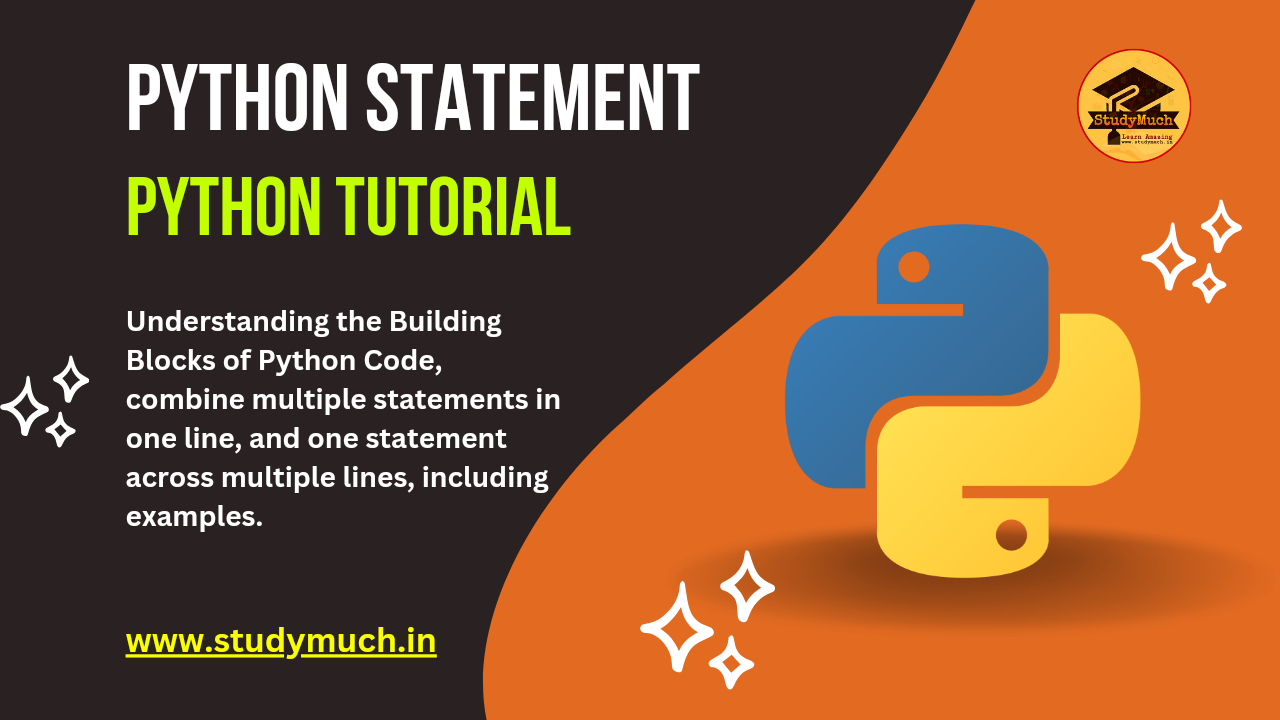Python Statement

Python Statement; Understanding the Building Blocks of Python Code
In this article you will about the Python Statement with programming examples. Python, a versatile and powerful programming language, is well-known for its simplicity and readability. One fundamental aspect of Python programming is the concept of statements. In this blog post, we will delve into what Python statements, explore how to combine multiple statements in one line, and learn the techniques for writing one statement across multiple lines, including examples.
What is python statement?
In Python, a statement is a unit of code that performs a specific action. It is commonly used to write a value, calculate a value, assign a value to a variable, call a function, and many more. It represents the building blocks of a Python program, and each program consists of a sequence of statements. These statements instruct the interpreter to perform special operations, such as variable assignment, control flow operations, function calls, and more.
Multiple Statements in One Line
One of the unique features of Python is its flexibility in allowing multiple statements to be written on a single line. This is achieved by separating the statements with a semicolon (;). However, it is essential to use this feature judiciously, as it can impact code readability and maintainability. It is generally recommended to stick to a single statement per line to enhance code clarity, but some situations may warrant multiple statements on a single line.
Let’s look at an example that combines multiple statements in one line:
# Example: Multiple statements in one line x =10; y =5; z = x + y; print(z)
In this above example, we perform four actions in a single line:
- Assign the value 10 to the variable x.
- Assign the value 5 to the variable y.
- Add the values of x and y, storing the result in the variable z.
- Print the value of z.
Remember that while combining statements in one line can save space, it should be used judiciously to maintain code readability.

One Statement in Multiple Lines
Python also allows breaking a single statement into multiple lines using the line continuation character (\) or by enclosing the statement within parentheses (), square brackets [], or curly braces {}.
Let’s illustrate this with an example:
# Example: One statement in multiple lines using line continuation character result = 10 + 20 + 30 + \ 40 + 50 print(result)
In this above example, we add multiple numbers together, and the line continuation character \ allows us to split the statement over several lines for better readability.
# Example: One statement in multiple lines using parentheses fruits = ['apple', 'banana', 'orange', 'grape', 'watermelon'] print(fruits)
Here, we create a list of fruits, and enclosing the list elements within square brackets [] enables us to spread the statement across multiple lines.
Conclusion
Understanding Python statements is crucial for writing effective and meaningful code. So, in this blog post, we explored the concept of Python statements and how to handle multiple statements in one line and one statement in multiple lines. While the ability to write multiple statements in one line can be useful in some situations, it’s vital to use it judiciously to maintain code clarity. Conversely, breaking a statement into multiple lines can improve code readability, making it easier for others (and yourself) to understand the logic behind the code.
Keep learning in our next Python tutorial as you continue your journey with Python. Bear in mind that writing clean and readable code not only benefits others, but also helps you in the long run, especially when dealing with complex projects and collaborating with other developers. Time.
Learn More;


1 Comment
tlovertonet · May 6, 2024 at 9:10 am
It¦s really a cool and useful piece of information. I¦m happy that you simply shared this useful info with us. Please keep us up to date like this. Thanks for sharing.